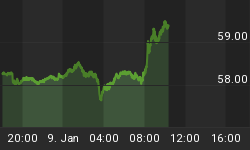Stock markets might just have finished a particularly strong quarter - with the S&P 500 Index gaining 15.2% for its best quarter since 1998, the MSCI World Index rising by 19.7% and the MSCI Emerging Markets Index adding 33.6% - but started to look tired last month, and July is also off to a shaky start.
Volume has been declining on rally days and expanding on declining days, which can be construed as bearish action. On July 2, Lowry's Buying Power Index closed one point below where the Index was at the March 9 stock market lows, i.e. Buying Power is now weaker than it was at the early March bottom.
As doubts persist over the strength of the global economic recovery, the S&P 500 Index, MSCI World Index and MSCI Emerging Markets Index have dropped by 5.0%, 5.9% and 6.3% respectively from their June highs.
Regarding the US markets, an excellent contrary indicator worth keeping an eye on is the CBOE Volatility (VIX) Index. The Index peaked at 52.7% in early March, coinciding with the rally lows, and has since declined by more than half. However, the Index seems to be bouncing off a support line while the Commodity Channel Index (CCI) - a momentum-type oscillator - has turned up from an oversold level for the first time since last May. This would indicate the end of the stock market rally.

Source: StockCharts.com
Considering the percentage of global stock markets trading above their 50- and 200-day lines respectively makes for interesting analysis. Most countries (89%) are trading above the 200-day average - an indicator of a bullish primary trend. As far as the secondary trend is concerned, 55% of the countries are still trading above the 50-day average, having corrected from an overbought level of 100% a few weeks ago. One would typically expect this measure to decline to lower levels in order to more fully correct the massive spring rally.
David Rosenberg, chief economist and strategist of Gluskin Sheff & Associates, said: "... for the near-term ... the testing process [for the S&P 500] does seem to be in place right now and carries with it some well-established investment patterns. Over the last year, we have seen four other testing phases and they all failed as the market did break to new lows. With the proviso that the S&P 500 hit an interim peak of 946 back on June 12, here is what the recent historical record tells us to expect (at a minimum, take profits).
• "The average length of the testing phase is 53 calendar days and 38 business days (versus 45 calendar days and 33 business days for the interim bear market rallies).
• On average, the S&P 500 undergoes a correction of more than 20%.
• The sectors that led during the rally, corrected most during the sell-off. This means that financials, consumer discretionary, materials and industrials should underperform in the next few months, while health-care, consumer staples, utilities and telecom services should emerge as the leaders.
• Market volatility more than doubles, on average.
• Bonds rally, with the 10-year Treasury note yield down nearly 15 basis points, on average.
• The flight to safety during these periods implies that the Canadian dollar declines (on average by 10%), while the trade-weighed US dollar rallies by more than 6%.
• Commodity prices decline by an average of 15%, again as cyclical trades unwind.
• Corporate spreads (Baa) widen by an average of more than 60 basis points; it is very important to be focused on high-quality paper during these market-testing periods as high-yield spreads widen, on average, by more than 300 basis points (and keep in mind the vast outperformance, which is typical during bear market rallies).
• What we discovered during this process was that gold performed quite well during both the bear market rallies and the subsequent selloffs (and despite the flows back in the US dollar). This may be an indication that gold is in a secular bull market."
Rosenberg concludes: "We found that health care, staples, utilities, high-quality bonds and the US dollar work best during these retests."
Meanwhile, Teun Draaisma, highly-regarded equity strategist at Morgan Stanley, argued there are "plenty of opportunities to make money beyond the market direction call" by pursuing a strategy that he describes as "the middle ground", as reported by the Financial Times.
"Macro and the next big market move have become everyone's favourite investment topic over the past two years. We suspect it is time to move on to the micro of sectors, stocks and styles," he said.
Draaisma's large "middle ground" of investment opportunities include "the forgotten market" Japan and "sectors that are cheap and under-owned with improving fundamentals" such as utilities, telcos and energy. Also "buying stocks with a management change, financial restructuring or a change of focus can be very lucrative".
I said the following on Sunday in my "Words from the Wise" review: "In my opinion, US stock markets are mapping out a base development formation, whereas a number of emerging markets have already bottomed out and subsequently confirmed primary uptrends. However, in the short term it is quite likely that markets could consolidate further and possibly retrace more of the prior gains."
While investors wait for Mr Market to show his hand, a cautious approach is warranted but that should not preclude one from finding stocks that look cheap.
Did you enjoy this post? If so, click here to subscribe to updates to Investment Postcards from Cape Town by e-mail.















